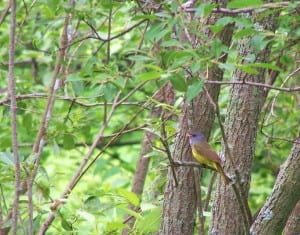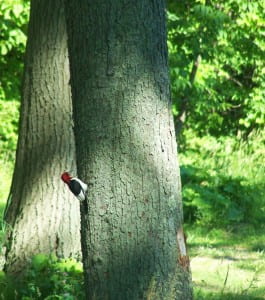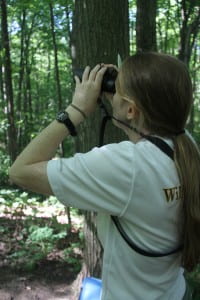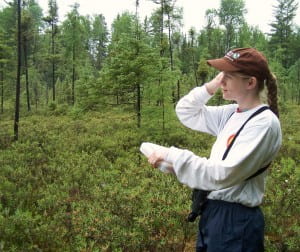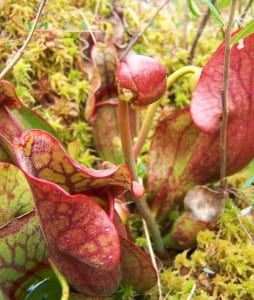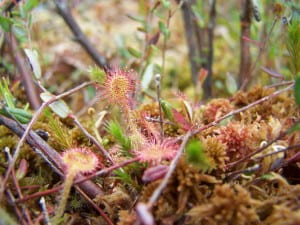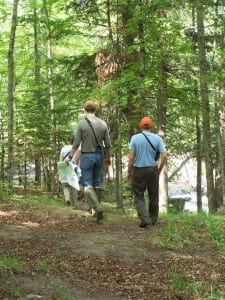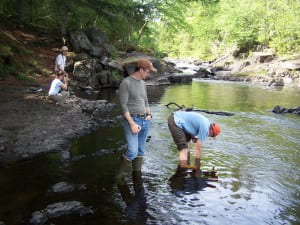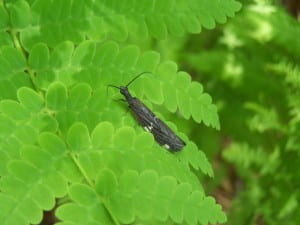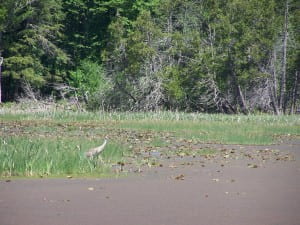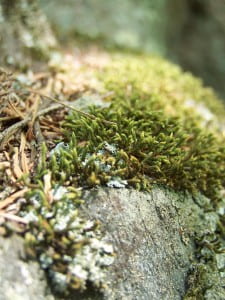The borders of the Lenfestey Family Courtyard are heavily planted with elderberries and each August and September as they ripen I have great views out my window of the birds that come to feast. There are always the usual bunch, the robins and their young that nested all summer in the Serviceberry, Cardinals of course, and the flocks of Cedar Waxwings that easily navigate the tangle of branches like bands of pirates finding the richest caches of fruit.

But there are Eastern Kingbirds joining the party too. Kingbirds rarely visit the courtyard, preferring the open edges of the trail near the ponds where they gracefully dive and roll, capturing flying insects in their pincer-like beaks. It is strange to see them flapping through the dense foliage of the elderberries, where they tip themselves forward off the branches as they clumsily pluck berries one by one. And while they seem a bit unfamiliar with the technique they do manage to gorge themselves with fruit. Fruit-eating also coincides with a remarkable tolerance in this notoriously aggressive species. Kingbirds will flock together during migration and in their South American wintering grounds.
Scientists have long recognized this feeding switch from insects to fruit in several species of primarily insectivorous birds shortly before and during migration. It was originally thought that the birds switched to fruit as insect populations declined, but this does not seem to be the case. It was also hypothesized that fruit might provide more calories, but nutrition studies showed that while some species did gain weight on fruit others lost weight (Smith et al. 2007). Other research has focused on the advantages of feeding on fruit. Insects require a lot more energy to find and capture and are usually caught on the wing, exposing birds to migrating hawks. Berries offer an easily collected high density food source and the foliage offers cover from hawks and other predators. Studies have also shown that birds do seek out berries that are highest in proteins and lipids (Parrish, 1996).
Just this year scientists have started to look at micronutrients including antioxidants in fruit. Migration is extremely stressful and scientists speculate that ingesting more antioxidants might improve these birds ability to survive during migration and in tropical wintering grounds where birds are packed closer together (McCue et al. 2010).
It has even been suggested by ornithologist Gene Morton (1971) that the white tip on the Eastern Kingbird’s tail might analogous to the bright tail feathers of the waxwings. As they forage tail flicks signal food locations to others in the flock .
Regardless of the physiological reasons migratory birds are switching to fruit, the take-home message is strong. Make sure that migrating birds have access to reliable sources of fruit in the fall. Both Parrish’s and McWilliams’ research suggests that native berries, are superior in nutrition to non-native species. We need to make sure that we preserve native habitats along migratory routes so that birds have reliable high quality food during stop-overs.
Parrish (1996) also argues for us to become better land stewards of our own yards. “Conserving native habitat in a backyard is simple and inexpensive,” he said. “Many songbirds will even use small, yard-sized patches of these natural landscapes during migration, providing people with exciting opportunities for bird observation–and providing the birds with the critical fuel for a long journey south.”
References
McCue, M. D., O. Sivan, S.R. McWilliams, and B. Pinshow (2010) Tracking the oxidative kinetics of carbohydrates, amino acids, and fatty acids in the house sparrow using exhaled 13CO2. Journal of Experimental Biology, in press.
Parrish, Jeffrey D. (1997) Patterns of Frugivory and Energetic Condition in Nearctic Landbirds during Autumn Migration. The Condor Vol. 99, No. 3 (Aug., 1997), pp. 681-697
Morton, Eugene S. (1971) Food in migration habits of the Eastern Kingbird in Panama. The Auk: 88: 925-926.
Smith, Susan B., Kathleen H. Mcpherson, Jeffrey M. Backer, Barbara J. Pierce, David W. Podlesak, and Scott R. Mcwilliams (2007) Fruit Quality and Consumption by Songbirds During Autumn Migration . The Wilson Journal of Ornithology 119(3):419–428
Turner, Scott (1996) Study shows songbirds switch from bugs to berries to fuel fall migration. Brown University news Bureau. http://www.brown.edu/Administration/News_Bureau/1996-97/96-019.html



